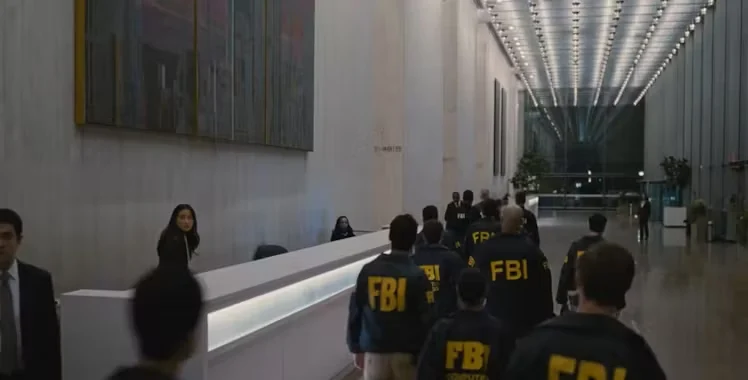
Even well-made, high-quality shows like ‘Succession‘ have occasional inconsistencies. Over its four seasons, the show sometimes stretches the truth with timelines, locations, and how businesses actually work, all to keep the plot moving. Once you notice these little flaws—like characters traveling impossibly fast or events happening too quickly—they become hard to ignore when you rewatch. Here’s a rundown of the most common mistakes viewers have spotted, and how they don’t quite add up in the real world.
Season 4’s “one crazy week” continuity

Season 4 is happening very quickly, with multiple episodes airing on back-to-back days. This fast pace causes some noticeable inconsistencies – characters seem to change hairstyles or outfits too quickly, and their appearance fluctuates in ways that don’t make sense within a single day. Some scenes meant to be from the same day jump around in time, showing shifts from morning to sunset and back again. If you pay attention to details like phones, meals, and the time between meetings, it becomes clear that these “single-day” episodes actually pack in enough events to fill two or three regular days.
Kendall’s 40th birthday math

Kendall’s fortieth birthday party feels out of sync with the show’s timeline. The series suggests only a year has passed since the beginning, but the party implies much more time has gone by, creating confusion when you remember earlier conversations about how recent events were. The party itself would have taken weeks to plan and set up, yet the story suggests everything is happening very quickly, with crises happening only days apart. This makes the birthday feel like an awkward disruption every time you watch the episode.
Shiv’s pregnancy timing vs. medical milestones

The show quickly moves Shiv through her pregnancy in Season 4, and the timeline doesn’t always feel realistic. Things like sonogram appointments, doctor visits, and her changing body seem to happen faster than they would in real life. Appointments are scheduled very close together, even for a busy New York doctor, making her pregnancy feel much longer than the season actually shows.
Coast-to-coast and transatlantic travel times

The show’s characters travel rapidly between New York, Virginia, California, and Europe, but the travel times don’t add up. While private jets speed things up, even a cross-country flight still takes five or six hours, plus time getting to and from airports. Several scenes show characters attending events overseas on the same day as morning meetings back in the US, which wouldn’t be possible with realistic travel schedules. When you check actual flight times against what’s shown on screen, the inconsistencies become clear.
Daylight and time-zone slip-ups with GoJo

When watching calls and video meetings with people in Sweden, the lighting sometimes doesn’t match up with the time of day being discussed. For example, conversations that sound like they’re happening in the New York morning often appear to be lit as if it’s afternoon in both locations. Considering the six-hour time difference, early mornings in New York should correspond to early afternoons in Stockholm. Sometimes, even late-night New York conversations seem to be happening during business hours in Europe, but the background doesn’t reflect that. Paying attention to windows and clocks quickly reveals these time zone errors.
Shareholder vs. board approvals blurred

The show often simplifies how companies make big decisions, blurring the lines between what shareholders, the board of directors, and executives actually do. In reality, things like mergers and choosing a new CEO follow strict rules: the board approves deals, shareholders vote on some changes, and specific committees manage things like pay and who will be the next leader. Many episodes create tense, last-minute voting scenes that skip over important legal requirements and timelines. Anyone who has experienced a real company vote would find these quick decisions unrealistic.
Antitrust and regulatory timing shortcuts

Big deals on the show—like buying an old company or being acquired by a tech firm—would normally require lengthy filings, reviews, and potential fixes that take weeks or even months. However, the show often jumps from an agreement to a completed deal in just days, skipping important steps like notifying regulators and waiting for required approvals. Even complex deals involving selling off parts of a business usually involve a lot of back-and-forth negotiation that isn’t shown. Once you understand the legal process for these kinds of transactions, the speed of the deals on the show seems unrealistic.
News-decision desk procedures at ATN

The way the network announced the election results highlighted how much influence leadership had, making it seem like there weren’t strong rules separating them from the people making the actual calls. In reality, reliable networks use data experts, detailed local results, and clear procedures to prevent last-minute changes by executives. The show also didn’t fully explain the usual standards for making projections, correcting mistakes, and coordinating with local stations. If you watch that moment again, knowing those safeguards are normally in place, the decision-making process seems surprisingly open and easily influenced.
Valuation swings that outpace disclosures

Company values can change by billions of dollars incredibly quickly, sometimes based on just a rumor or a single meeting, leading to immediate adjustments in deal terms. While news definitely impacts the market, private company valuations usually change more gradually, following thorough reviews, comparisons to similar companies, and typical financing rules. The show simplifies changes in how deals are paid – switching between cash and stock – as if they’re simple swaps, when in reality, these changes involve complex tax and ownership considerations. If you pay close attention to the financials, these instant price changes start to seem unrealistic and more like a dramatic effect for television.
Open-access offices during active investigations

Investigations have revealed family members and unauthorized personnel accessing secure areas when legal holds are in place. Companies usually take steps to protect sensitive information during legal disputes—like limiting access and controlling communication—to avoid losing evidence or compromising privileged information. The casual conversations happening in open conference rooms, where various employees mix, would need stricter controls according to legal advice. Seeing these unsecured areas during a legal review immediately highlights serious compliance issues.
Did you catch another quick mistake in ‘Succession’ that’s bugging you? Share it in the comments below!
Read More
- Predator: Badlands Is Not The Highest Grossing Predator Movie
- XRP Price Drama: Will It Finally Do Something Wild, or Is This Just Foreplay? 🤔💸
- The Enigmatic Dance of Crypto: A Dostoevskian Exploration
- XRP Plummets 9.5%… But the TD Sequential Says “Buy!” 💸📉📈
- SEC Halts Crypto ETFs: Will ProShares Cave or Quit? 🚫💰
- American Bitcoin’s Bold Dip Dive: Riches or Ruin? You Decide!
- 5 Ways ‘Back to the Future’ Aged Poorly (And 5 Ways It Aged Masterfully)
- IBM’s Quantum Ascent: A Stock’s Social Climb
- Trump Wants CNN ‘Neutralized’ in WBD Sale, Paramount Has ‘Inside Shot’
- WBD Demands Higher Bids by Dec. 1 — Saudis In Play?
2025-11-18 04:15